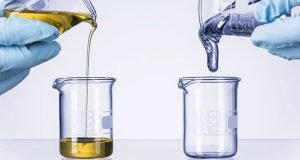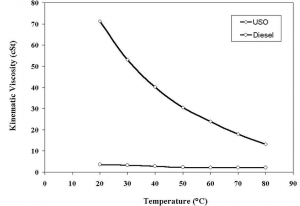Dynamic vs Kinematic Viscosity: its 9 Differences, & Formula
Dynamic vs. kinematic viscosity is the type of viscosity. The viscosity helps describe how well it flows or how thick a product is. When analyzing liquid behavior and fluid motion near solid boundaries, viscosity is an important fluid property.
When analyzing liquid behavior and fluid motion near solid boundaries, viscosity is an important fluid property. By shear stress or tensile stress, the viscosity of a fluid is a measure of its resistance to gradual deformation. When layers of fluids attempt to slide by one another, the shear resistance in a fluid is caused by intermolecular friction.

The ratio of shear stress to shear strain is called dynamic viscosity, and usually, it is measured in centipoise (cP), and Pa-s is the unit of measurement.
The ratio of dynamic fluid viscosity to its density is called kinematic viscosity, and the unit of measurement is m2/s.
Any two different fluids will never have the same kinematic viscosity because of density difference but can have the same dynamic viscosity.
The kinematic viscosity tells how fast the fluid moves when a certain force is applied, while dynamic viscosity gives you information on the force needed to make the fluid flow at a certain rate. In SI units, dynamic viscosity units are well established as mPa-s, and the most common kinematic viscosity units are cm2/s.
Dynamic Viscosity:
The tangential force required to move one horizontal plane of a fluid to another is called dynamic viscosity. OR
The measure of fluid’s resistance to shear flow when some external force is applied is known as dynamic viscosity.
For describing the behavior of fluids under stress, it is useful, and also in describing non-Newtonian fluids by observing how viscosity changes as the shear velocity changes, it is mostly used.

Formula:
The dynamic viscosity = shearing stress/shearing rate change.
The equation is;
η = τ / γ
Where,
η is the dynamic viscosity
τ is shearing stress &
γ is a shearing rate change.
Measuring Dynamic Viscosity:
To measure dynamic viscosity, the rotational viscometers are one of the more popular instruments used, and in the liquid sample, these instruments rotate a probe. By measuring the force or torque, viscosity is determined.
This viscometer can adjust the turning speed of the probe as it moves in the liquid, and the viscometer detects the variation in the sample’s viscosity as the speed.
Examples:
The fluid used in hydraulics, lubricants to avoid friction bearings, seals, etc.
Kinematic Viscosity:
The ratio of dynamic viscosity to the density of the fluid is called kinematic viscosity. OR
The measure of the inherent resistance of a fluid to flow when no external force is exerted except gravity is known as kinematic viscosity.
By dividing the absolute or dynamic viscosity of a fluid with the fluid mass density, kinematic viscosity can be obtained, and Centipoise (cP) is the unit of measure for dynamic viscosity.

Formula:
The kinematic viscosity = Dynamic viscosity / Fluid mass density.
The equation is;
ν = η / ρ
Where,
η is the kinematic viscosity
ρ is fluid density &
η is a dynamic viscosity.
Measuring of Kinematic Viscosity:
There are several ways to find the kinematic viscosity of the fluid, but the most common method is the capillary tube viscometer. In this method, the time it takes fluid to flow through a capillary tube is determined. Using a calibration constant provided for the specific tube, the time is converted directly to kinematic viscosity.
Centistokes (CST) is the unit of measure of kinematic viscosity.
Examples:
The fluids flowing in pipes and everything which involves more movement from one point to another are examples of kinematic viscosity.
Dynamic vs. Kinematic Viscosity Difference:
The difference between dynamic vs. kinematic viscosity is given below in the table:
Properties | Dynamic Viscosity | Kinematic Viscosity |
| Definition | Dynamic viscosity is the measurement of the fluid’s internal resistance to flow. | This viscosity is the ratio of dynamic viscosity to density. |
Also Known as | Absolute Viscosity | Diffusivity of momentum |
| Represents | The viscous force of the fluid | Inertia as well as viscous force |
Symbol | µ | V |
Ratio | The ratio of shear stress to shear strain. | The ratio of dynamic viscosity to density. |
Density | Independent | Dependent |
| Unit | Ns/m2 | m2/s |
Used | When viscous force is dominant. | When inertia, as well as viscous force, is dominant. |
| Formula | η = τ / γ | ν = η / ρ |
